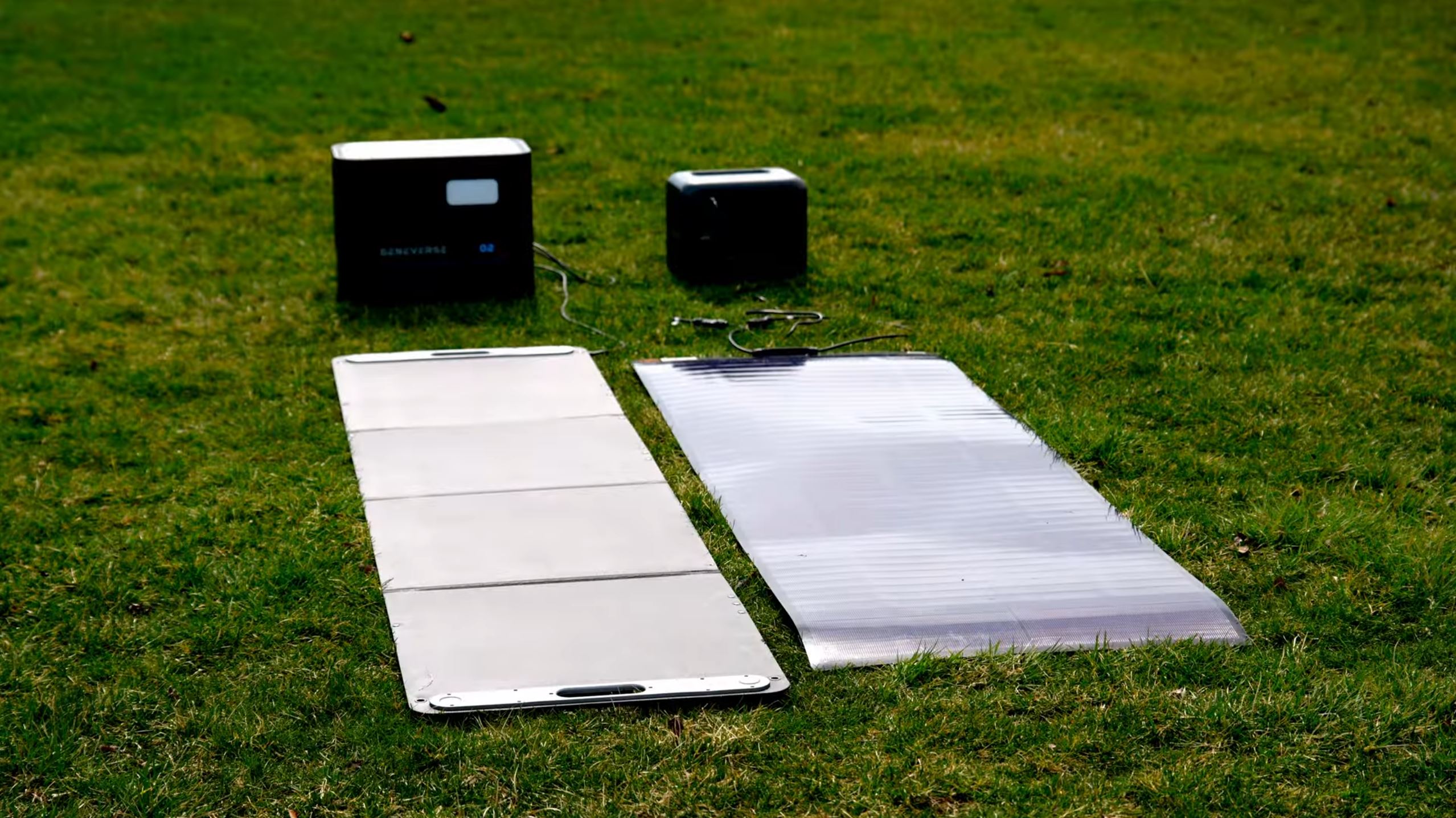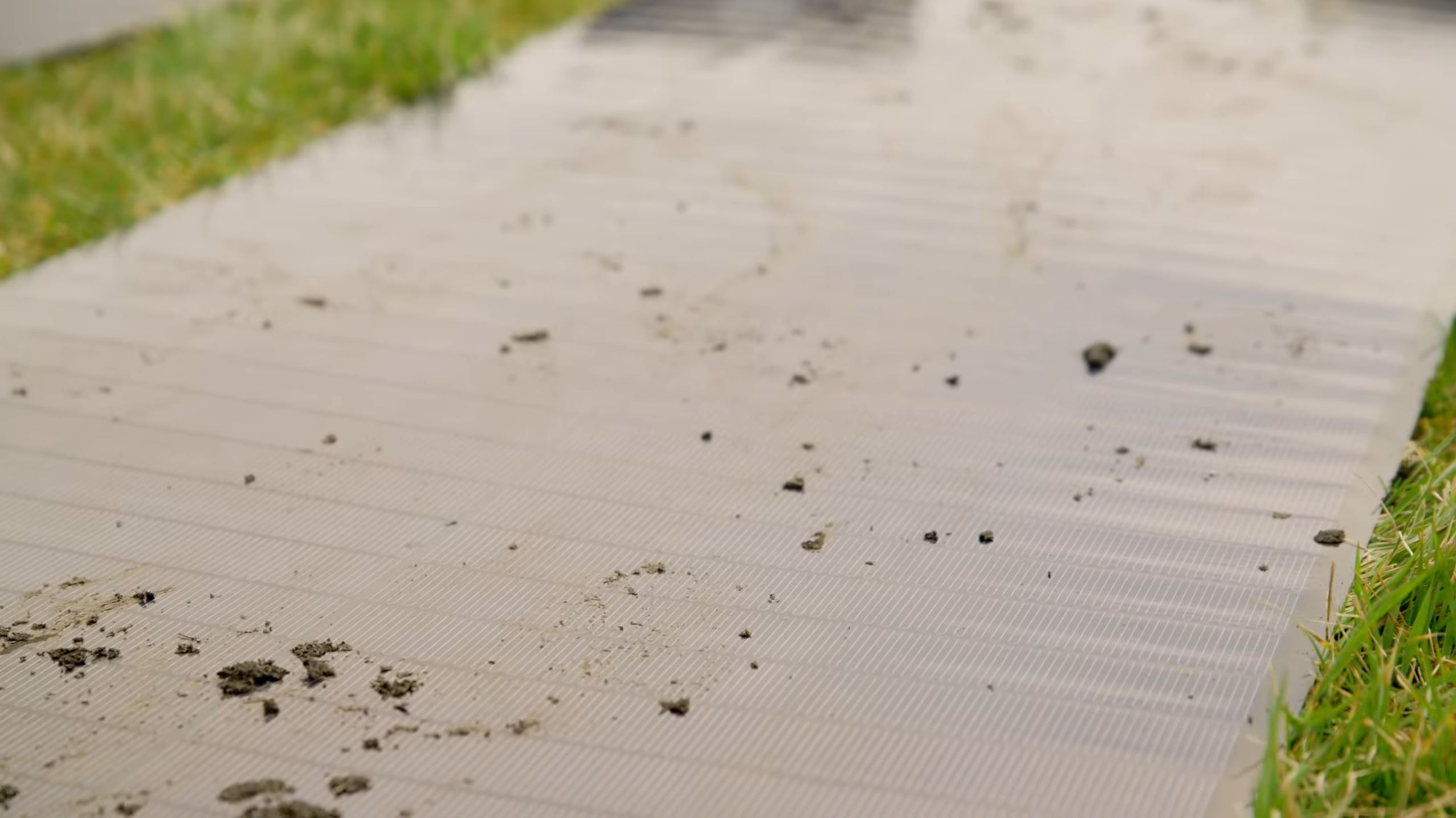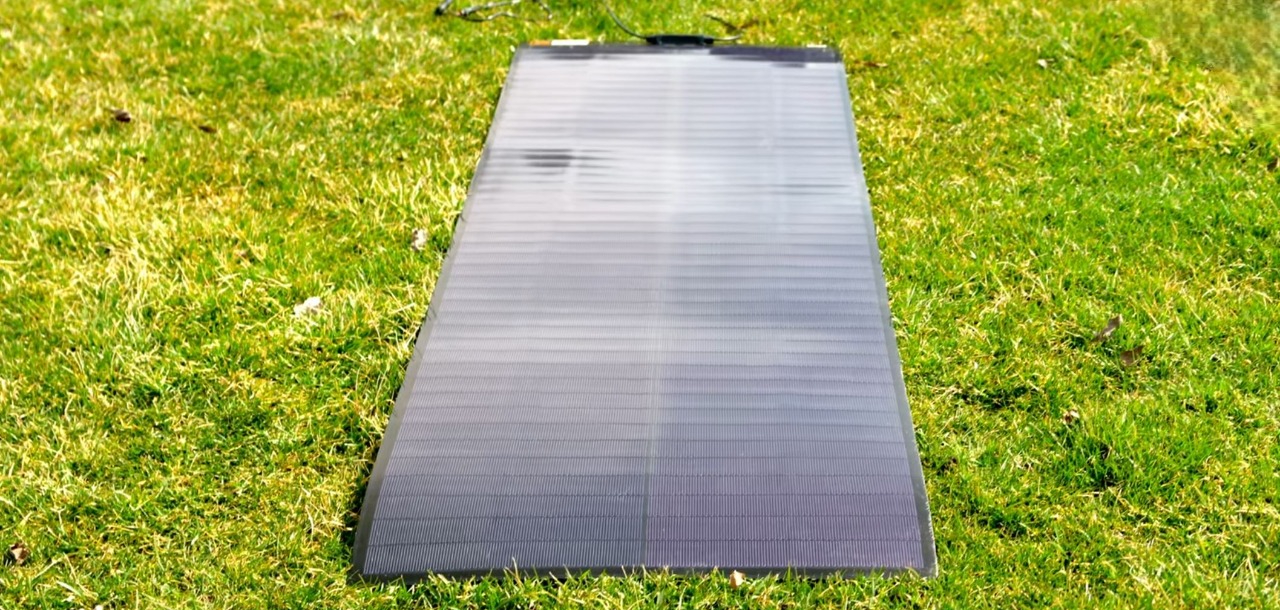Updated 7 months ago
BougeRV Yuma solar panel review: is this the right portable panel for you?
Written by Ben Zientara Ben ZientaraBen Zientara is a writer, researcher, and solar policy analyst who has written about the residential solar industry, the electric grid, and state util...Learn more , Edited by Catherine Lane Catherine LaneCatherine has been researching and reporting on the solar industry for five years and is the Written Content Manager at SolarReviews. She leads a dyna...Learn more

Why you can trust SolarReviews
SolarReviews is the leading American website for solar panel reviews and solar panel installation companies. Our industry experts have a combined three decades of solar experience and maintain editorial independence for their reviews. No company can pay to alter the reviews or review scores shown on our site. Learn more about SolarReviews and how we make money.
Our experts perform independent testing and reviews of consumer solar products. If you buy through links on our site, we may get a commission.
SolarReviews is the leading American website for consumer reviews and ratings of residential solar panels and solar panel installation companies. We’re also a team of solar experts with decades of experience who want to educate people about all the ways that solar power can improve their lives.
When we review and recommend consumer products like portable solar panels and batteries, our opinions about these products are based on our own independent research and testing. While we sometimes receive free review samples and participate in brand affiliate programs, no company can pay for an endorsement, nor to alter or remove any of our reviews, and we maintain 100% editorial independence.
The BougeRV Yuma 200-watt thin-film solar panel is the latest innovation from BougeRV. It is extremely lightweight and thin, and it can be installed on curved surfaces. It is designed to be permanently attached to the roof of a van, RV, or bus, and is also great for use on boats.
Pros
Lightweight, flexible construction
Excellent low-light and high-temperature performance
Very durable with up to 10 years warranty coverage
Cons
Fairly expensive without coupon codes
Somewhat larger surface area than similarly powerful silicon panels
The Yuma panel is a bit more expensive than some 200-watt portable solar panels on the market, but for people who want an ultra-portable, ultra-durable, flexible panel that works great in low-light conditions, it may be the best option available.
We spent some time testing the Yuma solar panel on the go alongside some of the best portable solar generators, and we found it to be every bit as good at making power as other portable solar panels, with some specific advantages that make it the right choice for a certain type of outdoor adventurer.
You can watch our hands-on video review of the Yuma 200 W panel or read on to find out what our experts think about this portable solar option!
BougeRV Yuma specifications and features
Specification | Data |
|---|---|
Cell type | CIGS thin film |
Max power output (Pmax) | 200 W +/- 5% |
Efficiency | 17% |
Open-circuit voltage (Voc) | 30.4 +/- 5%V |
Short Circuit Current (Isc) | 9.48±5%A |
Dimensions | 82.2 x 26.0 x 0.06 inches |
Weight | 8.44 lbs |
Warranty | 10-year product warranty, 25-year power output warranty. |
The features that make the Yuma 200W panel stand out include its low weight and easy portability, its ability to generate power in low-light and high-temperature conditions, and its ability to withstand abuse that would shatter the glass of traditional rigid solar panels.
CIGS technology
All of the features mentioned above have everything to do with the Yuma’s use of CIGS solar technology.
CIGS stands for copper indium gallium selenide, which is the chemical makeup of the semiconductor in these panels. That’s a mouthful, but you don’t need to know chemistry to understand how it works.
What it basically means is the material that makes the power inside the Yuma panel is so thin that the whole panel can be rolled up like a poster and carried anywhere.
Rather than the solar panel being made from discrete cells sliced from an ingot of silicon, the CIGS semiconductor material is deposited as a liquid directly onto the durable plastic substrate that forms the main body of the Yuma panel. Thin wires are laid over the CIGS layer and then sealed inside another layer of plastic.
This construction makes the Yuma solar panel lightweight and flexible. The solid layer of semiconductor and the density of the wiring means the panel starts making electricity when very little ambient light is present.
Durability and performance
The plastic-and-thin-film construction makes the panel very durable. It can be walked on, hit with a stick, scraped by a tree branch, or even shot with a gun and it will still work.
The panel is wired into 24 subsections that each have a special electrical component called a “bypass diode.” This means that if one tiny section of the panel is covered by shade or debris (or a bullet hole), the Yuma panel bypasses that section, and the rest still works.
This is much better than traditional silicon solar panels, which usually have only a few bypass diodes, meaning large sections of the panel don’t work when only a little shade is present.
Yuma 200 W cost and value
The retail price of the Yuma 200W panel is $599.99, which is about $3 per watt of power generating ability. That’s quite expensive compared to other 200-watt solar panels on the market, including BougeRV’s own “Arch” 200W flexible silicon solar panel.
The reason for the extra cost is the super-durable and effective CIGS thin-film technology, which we described above. The advantages of this panel for people with curved vehicle roofs or boat decks that are subject to all manner of shade, debris, and abuse can’t be understated.
Ideal uses for the Yuma 200 W
The Yuma 200W panel is ideal for use on curved vehicle roofs. The Yuma is one of the best solar panels for RVs, and because of its strong adhesive backing and ability to withstand people walking all over it, it is probably the best solar panel for boats.
One thing the BougeRV Yuma is not suited for is home rooftop use. Solar panels for homes are large rigid modules of silicon cells sandwiched between glass and EVA plastic and surrounded by a metal frame. They are also durable, but far more efficient and cost-effective than the Yuma.
BougeRV Yuma 200 performance in testing

We compared the production of the Yuma 200W solar panel (right) with a 200W panel from Geneverse.
The Yuma CIGS solar panel performed very well in our testing. We laid the panel side by side with a 200-watt panel from the Geneverse brand on a sunny spring day, and recorded nearly identical output from both panels. It should be noted that the Geneverse panel could have been tilted with its kickstands to better face the sun and increase output.
We then tested the Yuma panel’s durability by walking all over it with muddy boots. When the panel was sufficiently covered in dirt, we took another wattage measurement and again found that it performed more or less identically to the Geneverse panel.

Even after being walked on with muddy boots, the Yuma still performs.
This is impressive specifically because we would never advocate for walking on a silicon solar panel. Doing so can cause microcracks in the cells and permanently reduce the panel’s output. With a CIGS panel like the Yuma, it is no concern.
It should also be noted that the Geneverse panel weighs over twice as much as the Yuma (17.64 vs. 8.3 lbs), making the latter much easier to carry and move around.
Ease of use and installation
The BougeRV Yuma solar panel is extremely easy to use. It can be placed on the ground or permanently attached to a surface like the roof of a van or RV or the deck of a boat. The version we tested comes with strong adhesive strips along the back to allow it to be attached to these places, but BougeRV also makes a version of the Yuma panel with metal grommets built into the plastic body of the unit, allowing it to be tied down but not permanently affixed.
Speaking of the adhesive, BougeRV says that if you should ever want to remove the Yuma panel from a surface, you can run a thin wire between the adhesive and the surface, then use a pure ethanol cleaner to remove any leftover residue.
The Yuma panel’s thinness is a huge advantage for vehicle and boat users because it’s extremely aerodynamic and requires no roof penetrations. Compared to a rigid silicon solar panel, which sits above whatever surface it’s attached to and requires metal mounts screwed into that surface, the Yuma is an extremely attractive alternative.
The Yuma panel has positive and negative leads wired into it and MC-4 connectors at the end. These can connect to the MC-4 adapter that comes with the best portable solar generators on the market today.
Is the BougeRV Yuma solar panel right for you?
The BougeRV Yuma 200W solar panel is an excellent choice for people who demand the best and are willing to pay for it. It is a lightweight, low-profile, high-performance product that offers many benefits over traditional solar panels, plus a 10-year warranty from an established company.
The only downside is the relatively high cost, which at an MSRP of $599.99, is $3 per watt. That’s high compared to the average $2.50/watt cost of other portable solar panels, and the typical $1 per watt cost of rigid silicon solar panels.
However, at $479.99 with our AFF20 discount code on the BougeRV site, the Yuma starts to look a little better, at least compared to other portable panels.
If you have a stationary application where you don’t worry too much about shade, debris, and aerodynamics, you may want to opt for a more cost-effective solution. But for the money, you can’t get a better panel for a vehicle or boat, and the Yuma's portability is second to none, period. Highly recommended!
Ben Zientara is a writer, researcher, and solar policy analyst who has written about the residential solar industry, the electric grid, and state utility policy since 2013. His early work included leading the team that produced the annual State Solar Power Rankings Report for the Solar Power Rocks website from 2015 to 2020. The rankings were utilized and referenced by a diverse mix of policymakers, advocacy groups, and media including The Center...
Learn more about Ben Zientara